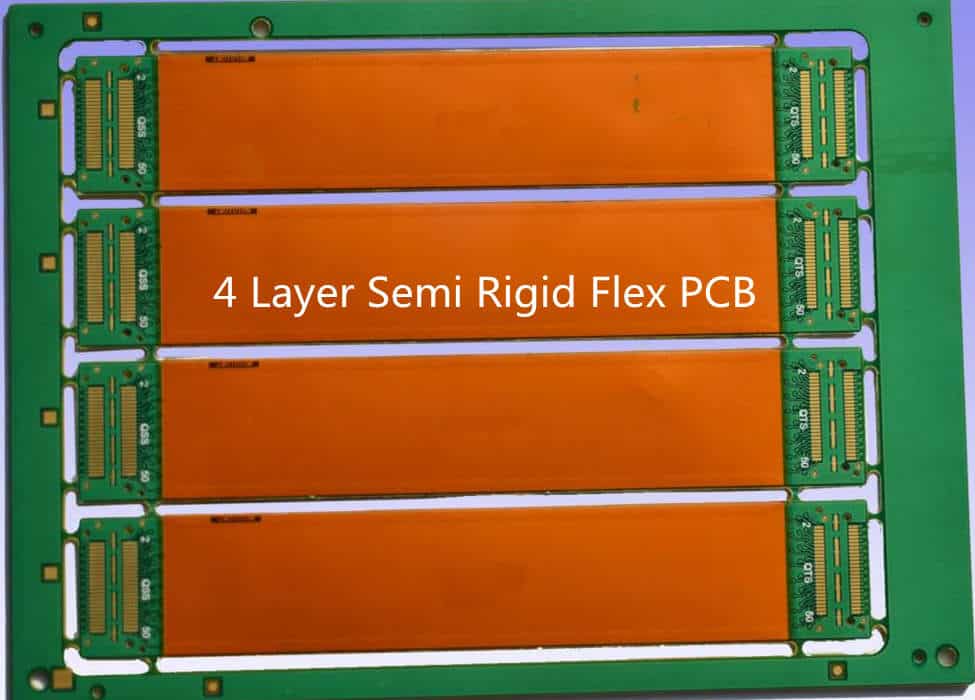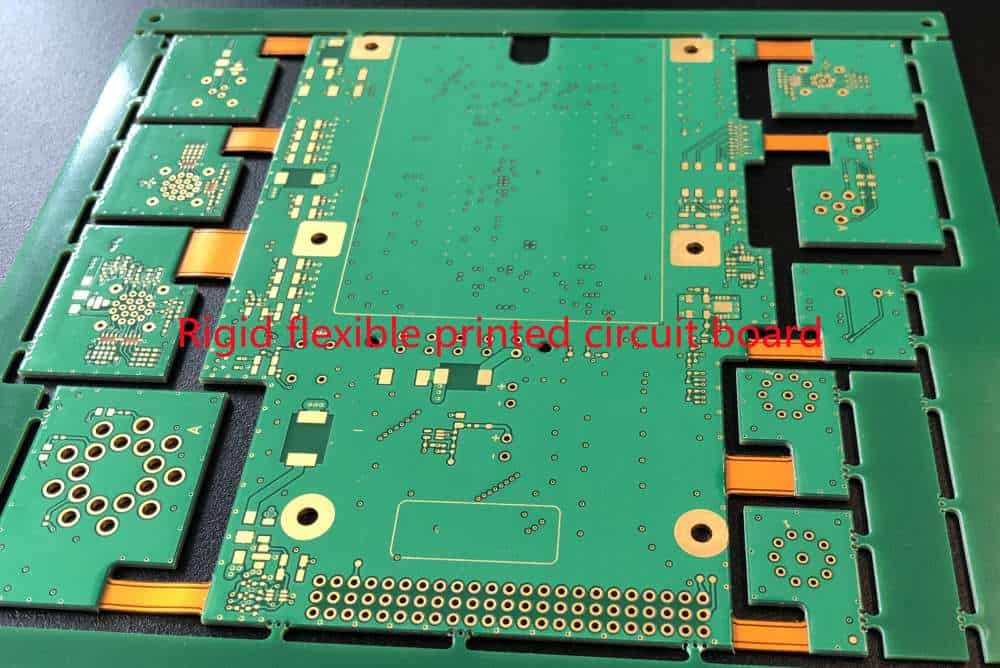Rigid flex PCBs, also known as rigid flexible printed circuit boards, combine rigid and flexible circuitry into a single component. They provide design flexibility and can optimize electronic devices by conforming to space constraints. However, rigid flex PCBs can have a higher cost than rigid PCBs. This article will examine the costs associated with rigid flex PCBs.
What is a Rigid Flex PCB?

A rigid flex PCB consists of rigid sections interconnected by flexible sections. The rigid portions provide mechanical support while the flexible portions allow dynamic flexing and motion. Rigid flex PCBs have conductors on both sides and can have complex layer stackups. They allow three-dimensional wiring and dense component mounting. Common applications include:
- Cell phones, tablets, and wearable devices
- Medical devices
- Automotive electronics
- Aerospace avionics
- Industrial equipment
Rigid flex PCBs must withstand repeated bending stresses. They require special materials and design rules to ensure reliability.
Cost Factors for Rigid Flex PCBs
Several factors contribute to the cost of rigid flex PCBs:
1. Board Complexity
Rigid flex PCB complexity directly impacts cost. Simple 2-layer designs with large bend radii are less expensive than multilayer boards with flexible sections that dynamically flex. Complex rigid flex designs require:
- More fabrication steps
- Tighter tolerances
- Advanced materials
- Sophisticated process control
High layer counts, fine lines/spaces, and high component densities increase cost. Frequently flexed areas need robust base materials.
2. Board Size
Larger rigid flex PCBs cost more than smaller boards. Maximum manufacturing panel sizes range from 18” x 24” to 21” x 24”. Panel utilization efficiency affects cost. Designs should maximize the rigid/flex area per panel.
3. Materials
The material stackup influences rigid flex PCB cost. Base materials include:
- Polyimide: Used for flex sections due to flexibility and high temperature resistance. More expensive than FR-4.
- FR-4 Glass Epoxy: Standard rigid PCB material. Low cost.
- Composites: Combine polyimide and FR-4. Moderate cost.
Copper foil thickness, dielectrics, stiffeners, and coverlayers also impact cost. Some materials improve flex life but have higher costs.
4. Special Processing
Advanced PCB processes needed for rigid flex PCBs add costs:
- Complex lamination cycles
- Plated through holes (PTHs) in rigid sections
- Fine line flexible circuits
- Controlled impedance traces
- High-reliability metal plating
- Solder masks and coatings
5. Testing
Rigid flex PCBs may require electrical testing, inspection, and environmental stress screening:
- ICT (in-circuit test)
- Flying probe
- AOI (automated optical inspection)
- X-ray
- Environmental stress tests
Testing ensures the boards meet application requirements over the product lifetime. More rigorous testing increases costs.
6. Low Volume Production
For prototypes and low volume production, rigid flex PCB costs are higher per board. Setup, tooling, and engineering charges are allocated over fewer boards. High volume manufacturing benefits from economies of scale.
Cost Comparison to Rigid PCBs
Rigid PCB fabrication has standardized materials and well-defined processes. This allows manufacturing economies of scale. In contrast, rigid flex PCBs have many custom options for the material stackup, layer count, and fabrication details. This leads to higher costs, especially for small batch orders.
One industry survey found rigid flex PCBs averaged 2-3x the cost of an equivalent rigid board. However, the benefits often justify the premium price. Rigid flex PCBs create size and weight savings for portable devices. They can replace mechanical assemblies, simplify production, and improve reliability. While cost is a consideration, total system value should be evaluated.
Cost Optimization Strategies

Several strategies can help reduce rigid flex PCB costs:
- Use design guidelines and stackups from your PCB manufacturer
- Build prototypes to verify the design before ramping to volume production
- Partner with your manufacturer early in the design process
- Minimize special processes such as impedance control or blind/buried vias
- Consolidate components to reduce layer counts
- Analyze board thickness requirements to avoid over-engineering
- Review panel utilization and tooling holes to optimize panel yield
- Consider flex-rigid-flex PCBs to isolate dynamic flexing regions
- Leverage economies of scale by ordering larger quantities when possible
The Future of Rigid Flex PCB Costs
Rigid flex PCB technology continues advancing while production volumes are increasing. This drives continual improvements in manufacturing capabilities, cost reduction, and economies of scale. At the same time, designs keep getting more complex and challenging. Leading PCB suppliers invest heavily in new equipment, process development, and quality systems to meet rising demands. These trends point toward rigid flex PCB costs decreasing gradually over time. However, costs are not likely to reach parity with standard rigid boards due to the inherent complexities.
Conclusion
Rigid flex PCBs enable innovative designs but come at a cost premium versus rigid boards. A multitude of factors impact the costs from materials and special processes to testing and production volumes. However, the benefits often justify the extra expense. By partnering with an expert PCB manufacturer, designers can optimize costs while meeting performance and reliability requirements. As technology progresses, rigid flex PCB costs may decrease but will remain higher than rigid PCBs.
Frequently Asked Questions
Q: Why are rigid flex PCBs more expensive than rigid PCBs?
Rigid flex PCBs are more complex to design and manufacture than traditional rigid boards. They require special materials to combine rigid and flexible circuits. The fabrication process also needs additional steps like complex lamination cycles. Testing is more extensive to ensure reliability. These factors all contribute to increased costs compared to standard rigid PCBs.
Q: How can I reduce the cost of my rigid flex PCB?
Work closely with your PCB manufacturer to optimize the design. Use their guidelines for stackup, layer count, and bend radii. Consolidate components to minimize layers. Review panel utilization and tooling holes. Build prototypes before volume production. Higher volumes provide economies of scale to lower cost per board.
Q: What are the most expensive materials for rigid flex PCBs?
Polyimide flex materials are more costly than rigid FR-4. More robust polyimides and adhesive systems improve flex life but have higher prices. Copper and dielectric thicknesses also impact costs. Your PCB manufacturer can recommend cost-effective stackups.
Q: Should I expect rigid flex PCB prices to decrease in the future?
Gradual reductions in rigid flex PCB costs are likely over time. Manufacturing processes and production volumes continue improving. However, the inherent complexity means rigid flex boards will remain priced higher than rigid PCBs. The benefits often justify the premium cost.
Q: Can I lower cost by sacrificing quality and testing?
It’s not recommended to cut corners on quality to reduce prices. This can jeopardize the performance, reliability, and lifetime of your product. Work with your PCB partner to optimize cost without compromising quality. Rigorous testing and inspection ensures your rigid flex PCBs meet requirements.






Leave a Reply